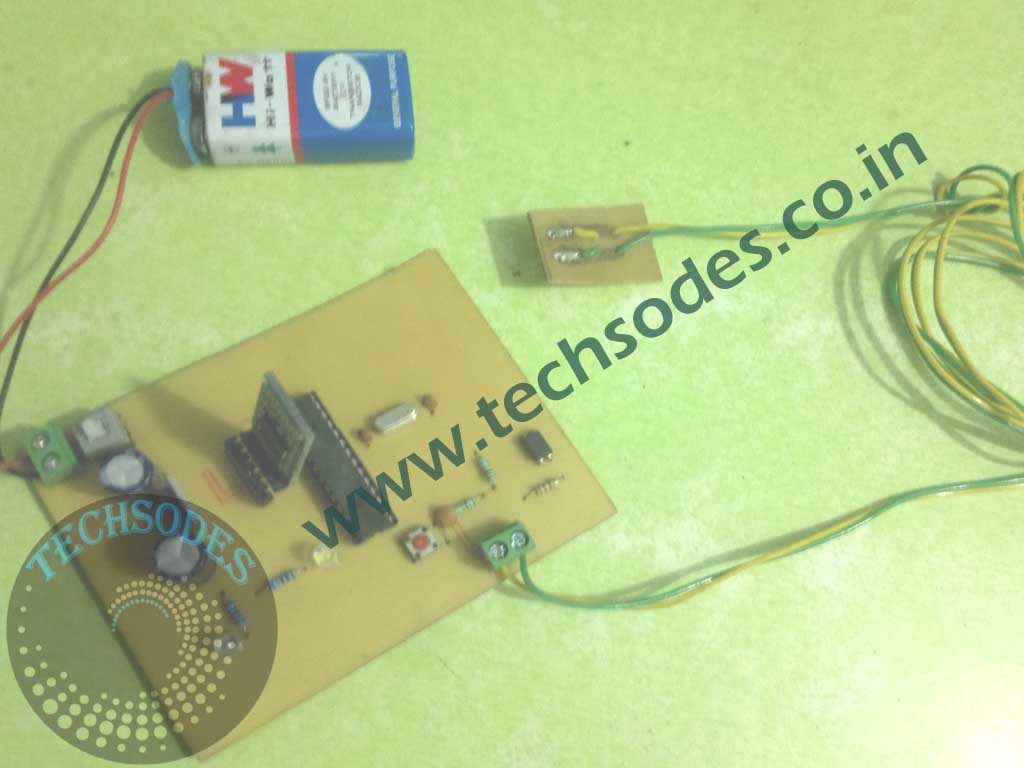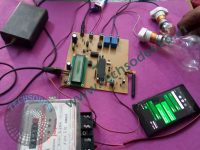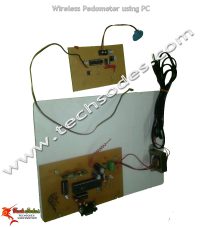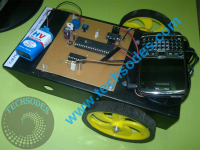Description
Intro:
This project focuses on creating a simple yet innovative pedometer using the ATmega328 microcontroller, Bluetooth HC05 module, and an Android smartphone. Instead of using an accelerometer to detect steps, a button is installed under the user’s shoe to automatically count steps as they walk. Each step presses the button, triggering the microcontroller to increase the step count, which is then transmitted wirelessly via Bluetooth to an Android app for display and tracking.
1. Project Overview
The project showcases a cost-effective solution for step counting using readily available components. The ATmega328 microcontroller monitors the button placed under the shoe. When the user takes a step, the pressure from the foot press activates the button, simulating a step count. The Bluetooth HC05 module wirelessly transmits the step data to an Android device, where an app displays the real-time step count. This design provides an alternative to traditional pedometers that use accelerometers, with the mechanical button performing a similar function.
2. Hardware Components
ATmega328 Microcontroller: Controls the counting mechanism and communicates with the Bluetooth module.
Button (Installed under the Shoe): Acts as a step detector, incrementing the step count with each footstep.
Bluetooth HC05 Module: Transmits the step count to the Android smartphone wirelessly.
Power Supply: Powers the microcontroller and Bluetooth module.
Android Smartphone: Receives and displays the step count in a dedicated app.
3. Circuit Design
The button is connected to one of the digital input pins of the ATmega328, and the press of the button is registered as a step. The Bluetooth HC05 is connected to the ATmega328 via UART pins for wireless communication. When the button is pressed by the foot, the step count is incremented, and the updated count is transmitted to the paired Android device using Bluetooth.
4. Working Principle
Step Detection: As the user walks, the button installed under the shoe is pressed with each step. The ATmega328 registers the button press and increments the step count.
Bluetooth Communication: The step count is transmitted wirelessly using the Bluetooth HC05 module to the Android device.
Display on Android: The Android app receives the data and displays the step count, allowing users to monitor their progress in real time.
5. Advantages
Simplicity: The use of a button instead of an accelerometer simplifies the design and reduces costs.
Wireless Monitoring: The Bluetooth connection allows for real-time step tracking on a mobile device.
Customization: The project can be expanded or modified easily, making it ideal for beginners or hobbyists.
Mechanical Precision: The button ensures accurate step detection as each press corresponds to a single step.
6. Applications
This project demonstrates the integration of hardware and software in an innovative way, and it has multiple applications:
Fitness tracking: A simplified pedometer for monitoring physical activity.
Custom devices: This system can be adapted into custom wearable fitness devices.
Educational projects: Ideal for learning microcontroller programming and Bluetooth communication.
7. Conclusion
The pedometer using an ATmega328 microcontroller, Bluetooth HC05, and Android app provides a unique solution for step counting by using a button installed under the shoe. This project blends creativity with technical skills, allowing users to track their steps wirelessly with a simple and efficient design. It serves as an excellent demonstration of microcontroller integration, wireless communication, and mobile app development.













Reviews
There are no reviews yet.